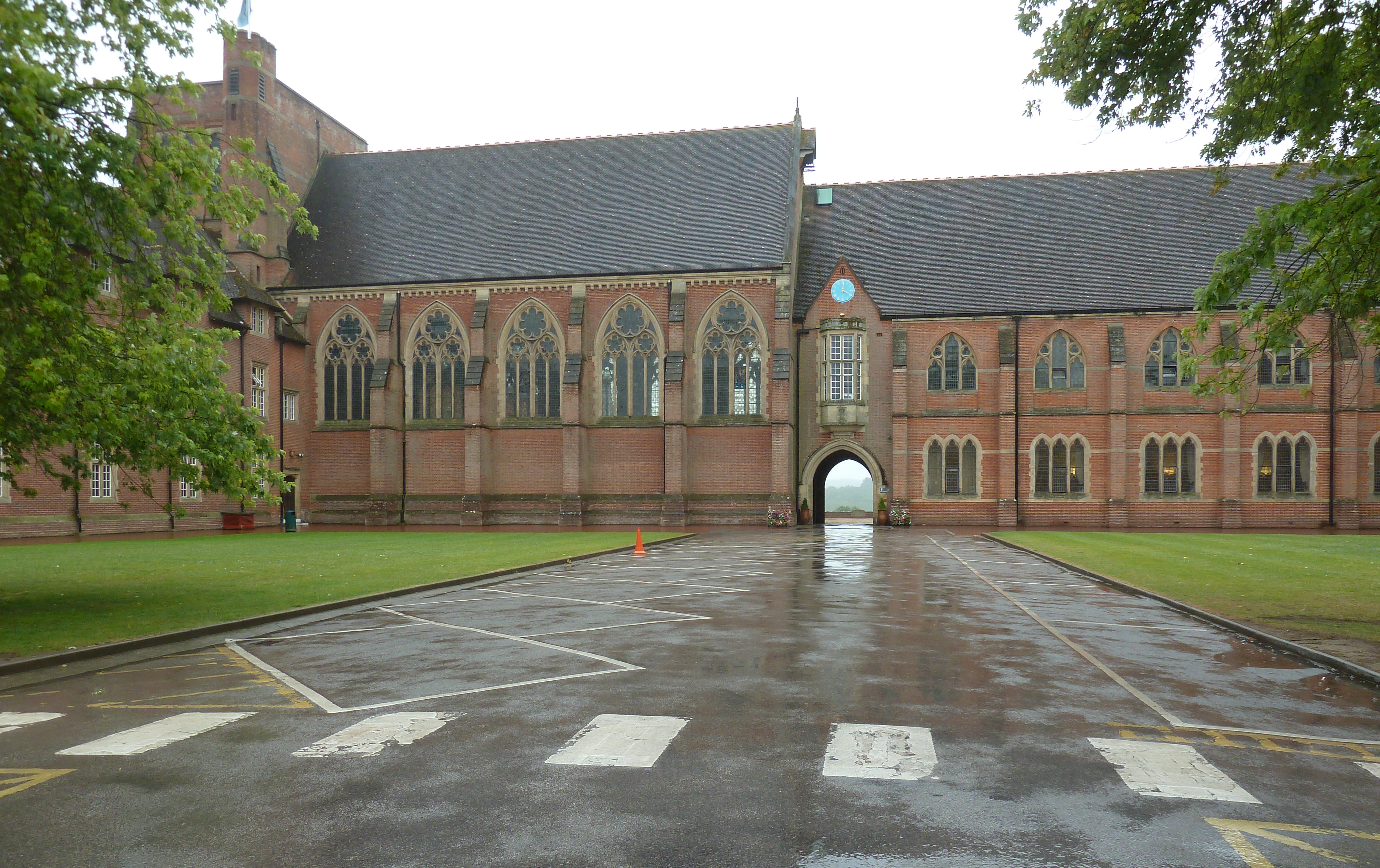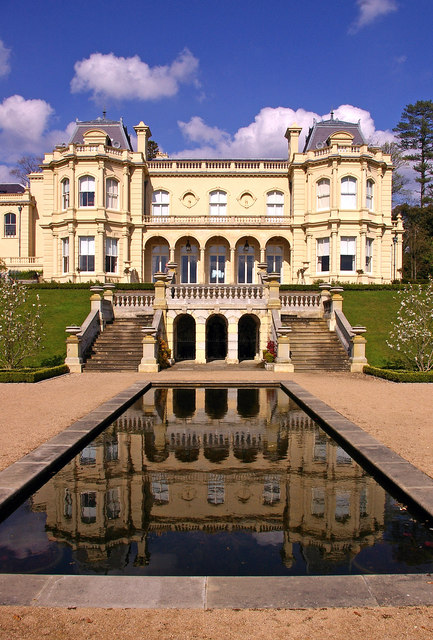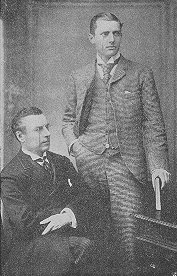|
Castle Bromwich Assembly
Castle Bromwich Assembly is a factory owned by Jaguar Land Rover. It is located on the Chester Road in Castle Vale, Birmingham, England and employs 3,200 people. The plant covers an area of 110 acres (44.5 hectares), with a 60,000 m² (6-hectare) manufacturing facility. It manufactures all Jaguar saloon and sports cars. The site was first developed as Castle Bromwich Aircraft Factory, a shadow factory for the production of aircraft by the car industry as part of the rearmament of the UK in the pre-Second World war era. After initial problems it was brought under the control of aircraft manufacturers and became one of the largest producers of aircraft during the war. History Castle Bromwich Aircraft Factory Nuffield: 1936–1940 In 1936, the British government had formalised a plan under the Air Ministry called the Shadow factory plan to increase capacity within Britain's aircraft industry. Headed up by automotive pioneer Herbert Austin, the plan was to create nine new factor ... [...More Info...] [...Related Items...] OR: [Wikipedia] [Google] [Baidu] |
Alex Henshaw
Alexander Adolphus Dumphries Henshaw, (7 November 1912 – 24 February 2007) was a British air racer in the 1930s and a test pilot for Vickers Armstrong during the Second World War. Early life Henshaw was born in Peterborough, the eldest son of a wealthy Lincolnshire family. He was educated at King Edward VI Grammar School, Stratford-on-Avon ("Shakespeare's School" where he sat at the Bard's desk),Riding 2007, p. 48. and Lincoln School (formerly Lincoln Grammar School). He was awarded the Royal Humane Society Medal for saving the life of a boy from the River Witham. Air racing Henshaw's early ambition was to race motorcycles, and he harboured dreams of competing in the Isle of Man TT Races. However after watching a bi-plane swooping low over the sea, he decided that he wished to learn to flyand undertook lessons at the Skegness and East Lincolnshire Aero Club in 1932, funded by his father, who bought him a de Havilland Gipsy Moth. Henshaw received his private pilot's licenc ... [...More Info...] [...Related Items...] OR: [Wikipedia] [Google] [Baidu] |
Charles Richard Fairey
Sir Charles Richard Fairey MBE FRAeS (5 May 1887 – 30 September 1956), also known as Richard Fairey, was an English aircraft manufacturer. Early life Charles Fairey was born on 5 May 1887 in Hendon, Middlesex and educated at the Merchant Taylors' School, Northwood and Ardingly College, and later as an apprentice at the Finsbury Technical College where he studied City & Guilds courses in electrical engineering and chemistry. Fairey's father had died when he was aged 11 and although from a middle-class background this dramatic change in the families circumstances led to Fairey taking a job, aged 15 with the Jandus Electric Company of London, who manufactured arc lamps. His progress was such that he was able to take charge of the installation of electric lights at Heysham docks whilst still in his teens. His next job was as an analytical chemist, working on boiler-feed and fuel problems at Municipal Borough of Finchley power station. Fairey became a skilled designer and buil ... [...More Info...] [...Related Items...] OR: [Wikipedia] [Google] [Baidu] |
Minister Of Aircraft Production
The Minister of Aircraft Production was, from 1940 to 1945, the British government minister at the Ministry of Aircraft Production, one of the specialised supply ministries set up by the British Government during World War II. It was responsible for aircraft production for the British forces, primarily the Royal Air Force, but also the Fleet Air Arm. History During the war, British aircraft production quickly expanded to be the largest industry in the country, involving hundreds of private firms and employing nearly two million workers. The Ministry was set up to co-ordinate the activity of this industry to maximise aircraft production. There was a headquarters in London and twelve regions, each with a controller and resident Ministry representatives in most of the larger factories. The department was formed in May 1940 by the Prime Minister, Winston Churchill, to produce large numbers of aircraft to fight the Battle of Britain. The first minister was Lord Beaverbrook; under h ... [...More Info...] [...Related Items...] OR: [Wikipedia] [Google] [Baidu] |
Max Aitken, 1st Baron Beaverbrook
William Maxwell Aitken, 1st Baron Beaverbrook (25 May 1879 – 9 June 1964), generally known as Lord Beaverbrook, was a Canadian-British newspaper publisher and backstage politician who was an influential figure in British media and politics of the first half of the 20th century. His base of power was the largest circulation newspaper in the world, the ''Daily Express'', which appealed to the conservative working class with intensely patriotic news and editorials. During the Second World War, he played a major role in mobilising industrial resources as Winston Churchill's Minister of Aircraft Production. The young Max Aitken had a gift for making money and was a millionaire by 30. His business ambitions quickly exceeded opportunities in Canada and he moved to Britain. There he befriended Bonar Law and with his support won a seat in the House of Commons at the December 1910 United Kingdom general election. A knighthood followed shortly after. During the First World War he ran th ... [...More Info...] [...Related Items...] OR: [Wikipedia] [Google] [Baidu] |
Winston Churchill
Sir Winston Leonard Spencer Churchill (30 November 187424 January 1965) was a British statesman, soldier, and writer who served as Prime Minister of the United Kingdom twice, from 1940 to 1945 Winston Churchill in the Second World War, during the Second World War, and again from 1951 to 1955. Apart from two years between 1922 and 1924, he was a Member of Parliament (United Kingdom), Member of Parliament (MP) from 1900 to 1964 and represented a total of five UK Parliament constituency, constituencies. Ideologically an Economic liberalism, economic liberal and British Empire, imperialist, he was for most of his career a member of the Conservative Party (UK), Conservative Party, which he led from 1940 to 1955. He was a member of the Liberal Party (UK), Liberal Party from 1904 to 1924. Of mixed English and American parentage, Churchill was born in Oxfordshire to Spencer family, a wealthy, aristocratic family. He joined the British Army in 1895 and saw action in British Raj, Br ... [...More Info...] [...Related Items...] OR: [Wikipedia] [Google] [Baidu] |
Neville Chamberlain
Arthur Neville Chamberlain (; 18 March 18699 November 1940) was a British politician of the Conservative Party who served as Prime Minister of the United Kingdom from May 1937 to May 1940. He is best known for his foreign policy of appeasement, and in particular for his signing of the Munich Agreement on 30 September 1938, ceding the German-speaking Sudetenland region of Czechoslovakia to Nazi Germany led by Adolf Hitler. Following the German invasion of Poland on 1 September 1939, which marked the beginning of the Second World War, Chamberlain announced the declaration of war on Germany two days later and led the United Kingdom through the first eight months of the war until his resignation as prime minister on 10 May 1940. After working in business and local government, and after a short spell as Director of National Service in 1916 and 1917, Chamberlain followed his father Joseph Chamberlain and elder half-brother Austen Chamberlain in becoming a Member of Parliament in t ... [...More Info...] [...Related Items...] OR: [Wikipedia] [Google] [Baidu] |
Strike Action
Strike action, also called labor strike, labour strike, or simply strike, is a work stoppage caused by the mass refusal of employees to Labor (economics), work. A strike usually takes place in response to grievance (labour), employee grievances. Strikes became common during the Industrial Revolution, when Labour economics, mass labor became important in factories and mines. As striking became a more common practice, governments were often pushed to act (either by private business or by union workers). When government intervention occurred, it was rarely neutral or amicable. Early strikes were often deemed unlawful conspiracies or anti-competitive cartel action and many were subject to massive legal repression by state police, federal military power, and federal courts. Many Western nations legalized striking under certain conditions in the late 19th and early 20th centuries. Strikes are sometimes used to pressure governments to change policies. Occasionally, strikes destabilize ... [...More Info...] [...Related Items...] OR: [Wikipedia] [Google] [Baidu] |
Rotol
Dowty Propellers is a British engineering company based in Brockworth, Gloucestershire that specialises in the manufacture, repair and overhaul of propellers and propeller components for customers around the world. It is owned by General Electric, forming part of its GE Aviation Systems division. History The company was formed as Rotol Airscrews in 1937 by Rolls-Royce and Bristol Engines to take over both companies' propeller development, the market being too small to support more than one company. The name is a contraction of "ROlls-Royce" and "BrisTOL". Rotol's propellers were always considered leading edge, its models equipping the Hawker Hurricane, Supermarine Spitfire, and many other Second World War-era aircraft. By the end of the war it had introduced the first five-bladed propeller to see widespread use, used on late-model Spitfires. In 1943 the company changed its name from Rotol Airscrews Limited to Rotol Limited, and in 1952 it acquired British Messier Limited, a ... [...More Info...] [...Related Items...] OR: [Wikipedia] [Google] [Baidu] |
De Havilland
The de Havilland Aircraft Company Limited () was a British aviation manufacturer established in late 1920 by Geoffrey de Havilland at Stag Lane Aerodrome Edgware on the outskirts of north London. Operations were later moved to Hatfield in Hertfordshire. Known for its innovation, de Havilland was responsible for a number of important aircraft, including the Moth biplane which revolutionised aviation in the 1920s; the 1930s Fox Moth, a commercial light passenger aircraft; the wooden World War II Mosquito multirole aircraft; and the pioneering passenger jet airliner Comet. The de Havilland company became a member of the Hawker Siddeley group in 1960, but lost its separate identity in 1963. Later, Hawker Siddeley merged into what is eventually known today as BAE Systems, the British aerospace and defence business. The de Havilland name lives on in De Havilland Canada, which owns the rights to the name and the aircraft produced by de Havilland's former Canadian subsidiary, inc ... [...More Info...] [...Related Items...] OR: [Wikipedia] [Google] [Baidu] |
Rolls-Royce Merlin
The Rolls-Royce Merlin is a British liquid-cooled V-12 piston aero engine of 27-litres (1,650 cu in) capacity. Rolls-Royce designed the engine and first ran it in 1933 as a private venture. Initially known as the PV-12, it was later called ''Merlin'' following the company convention of naming its four-stroke piston aero engines after birds of prey. After several modifications, the first production variants of the PV-12 were completed in 1936. The first operational aircraft to enter service using the Merlin were the Fairey Battle, Hawker Hurricane and Supermarine Spitfire. The Merlin remains most closely associated with the Spitfire and Hurricane, although the majority of the production run was for the four-engined Avro Lancaster heavy bomber. A series of rapidly-applied developments, brought about by wartime needs, markedly improved the engine's performance and durability. Starting at 1,000 hp for the first production models, most late war versions produced just ... [...More Info...] [...Related Items...] OR: [Wikipedia] [Google] [Baidu] |
Spitfire Mk2a P7350 Arp
The Supermarine Spitfire is a British single-seat fighter aircraft used by the Royal Air Force and other Allied countries before, during, and after World War II. Many variants of the Spitfire were built, from the Mk 1 to the Rolls-Royce Griffon engined Mk 24 using several wing configurations and guns. It was the only British fighter produced continuously throughout the war. The Spitfire remains popular among enthusiasts; around 70 remain airworthy, and many more are static exhibits in aviation museums throughout the world. The Spitfire was designed as a short-range, high-performance interceptor aircraft by R. J. Mitchell, chief designer at Supermarine Aviation Works, which operated as a subsidiary of Vickers-Armstrong from 1928. Mitchell developed the Spitfire's distinctive elliptical wing with innovative sunken rivets (designed by Beverley Shenstone) to have the thinnest possible cross-section, achieving a potential top speed greater than that of several contemporary fig ... [...More Info...] [...Related Items...] OR: [Wikipedia] [Google] [Baidu] |










